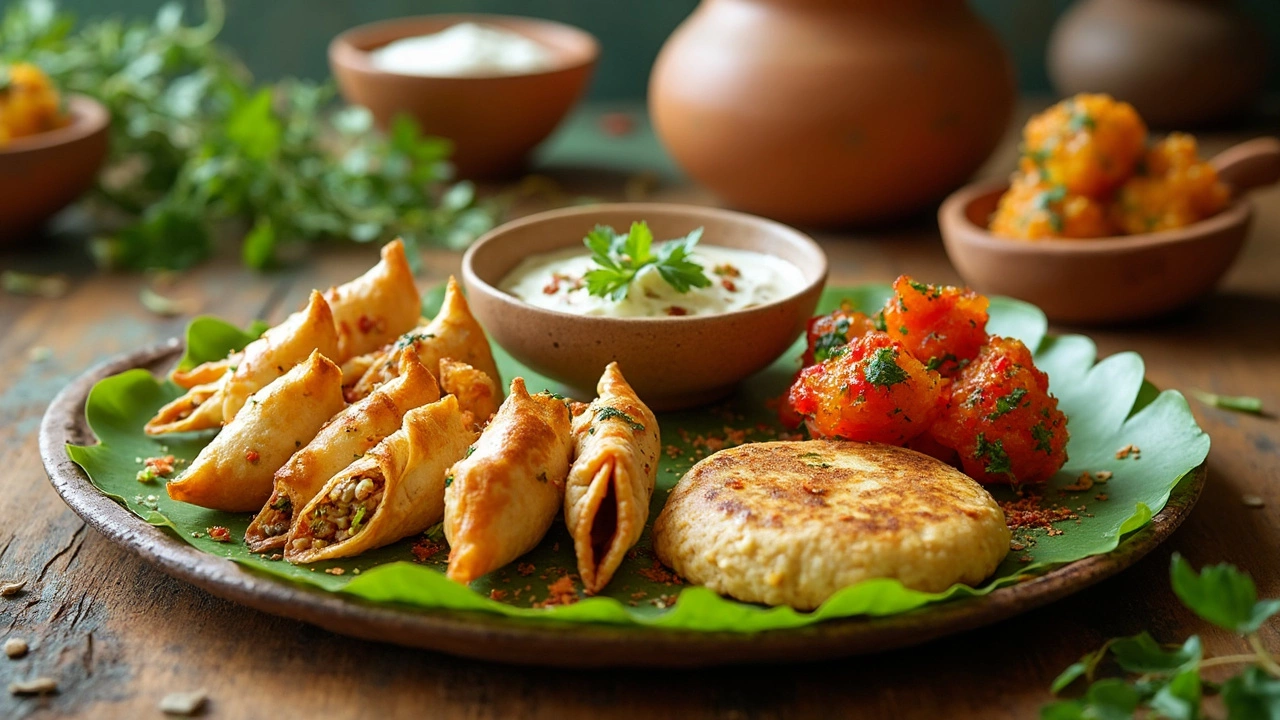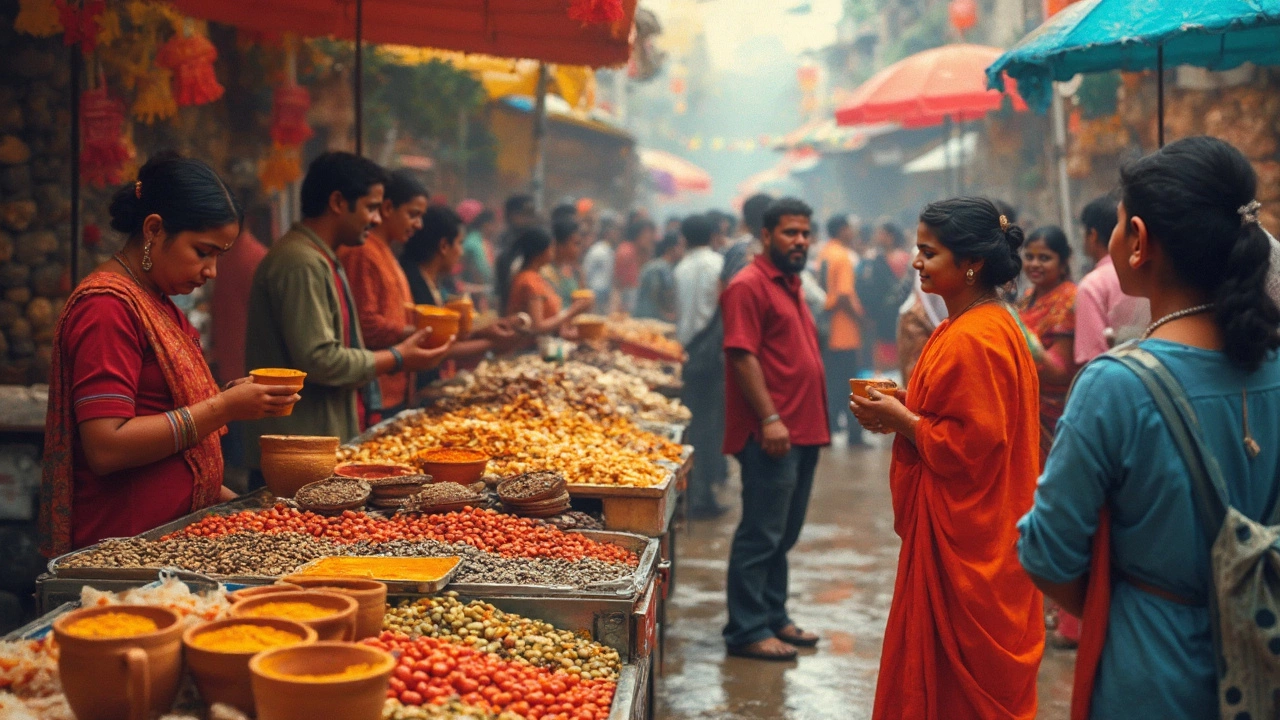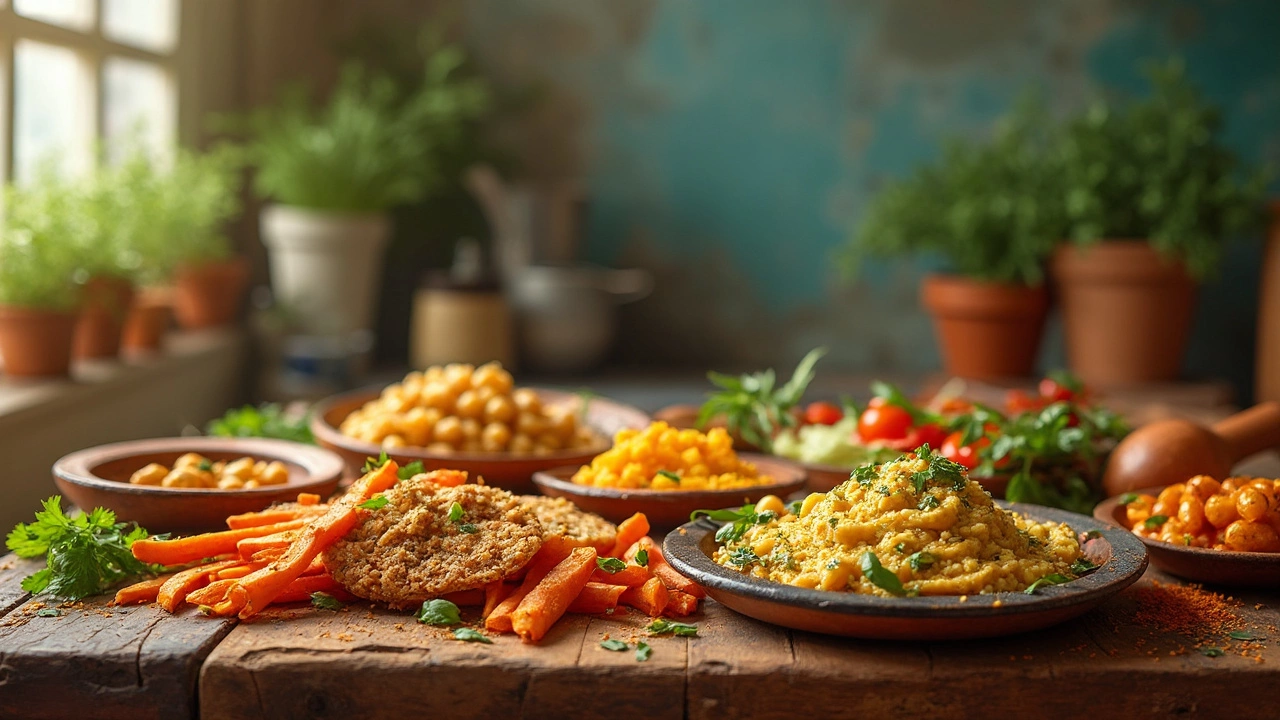Craving something delicious but want to keep it healthy? Indian snacks are here to save the day. With a glorious mix of flavors and textures, they’re perfect for anyone looking to munch without the guilt.
So, what's the secret to a healthy Indian snack? It often boils down to the ingredients and how they’re prepared. Traditionally, many Indian snacks use a variety of spices, herbs, and legumes that are packed with nutrients. Plus, they’re often baked or steamed, which is a win-win for health-conscious snackers.
Take, for instance, Chana Chaat. It's made with chickpeas, a powerhouse of protein and fiber. Add some chopped veggies and a dash of spices, and you’ve got yourself a snack that’s tasty and satisfying. And guess what? No deep frying involved!
- What Makes an Indian Snack Healthy?
- Top Healthy Indian Snacks
- Benefits of Traditional Ingredients
- Quick and Nutritious Recipes
- Tips for Healthy Snacking
What Makes an Indian Snack Healthy?
When you think of Indian snacks, you might imagine fried goodies that taste divine but aren't exactly waistline-friendly. But here's the twist—many Indian snacks can be both delicious and healthy! It's all about the right mix of ingredients and preparation techniques.
Firstly, let’s talk ingredients. Many of the healthiest Indian snacks revolve around whole grains and legumes. Think about chickpeas, lentils, and millets. These ingredients are packed with fiber, which is great for digestion, and loaded with protein, giving you energy without piling on empty calories. Not to mention, they keep you full for longer, making it easier to skip the mid-afternoon vending machine run.
Spices play a huge role in making snacks tasty yet healthy. Turmeric, for example, isn’t just there for color. It's known for its anti-inflammatory properties. Likewise, cumin aids digestion, and mustard seeds can boost metabolism. So when you’re biting into that spicy bhel or tangy coriander chutney, you’re not just enjoying a flavor bomb—you’re doing your body a favor too.
Then, there’s the cooking method to consider. Baking, steaming, or air-frying snacks can keep them healthy while maintaining that crave-worthy taste and texture. Pakoras, for instance, aren’t typically thought of as healthy because they're often deep-fried. But swap the frying for baking, and you’ve got yourself a lighter, equally satisfying option.
Here's a cool stat: According to recent surveys, homemade snacks see a significant reduction in calories and unhealthy fats compared to store-bought ones. Fancy a little number crunching? Check out this quick comparison of calories in fried vs. baked Indian snacks:
| Snack | Fried Calories (per serving) | Baked Calories (per serving) |
|---|---|---|
| Samosa | 265 | 180 |
| Pakora | 250 | 185 |
So next time you're snacking, remember, healthier swaps and mindful choices can turn your favorite Indian snacks into a nutritious powerhouse. It’s not just about the bold flavors but making those flavors work for your wellness too!
Top Healthy Indian Snacks
If you’re hunting for healthy Indian snacks that satisfy those midday cravings without derailing your diet, look no further. Loading up on nutritious bites doesn’t mean skimping on taste, particularly when it comes to Indian food.
1. Roasted Makhana (Fox Nuts): Think of them as popcorn’s spicier cousin. Makhana is low in calories and rich in protein. Sprinkling them with a bit of pepper or chili powder takes them from plain to wow. They’re also packed with antioxidants and are good for your heart.
2. Grilled Paneer Skewers: Who doesn’t love a good skewer? Paneer is high in protein and, when grilled with spices and veggies, it makes for a satisfying and quick snack. It's filling and perfect for anyone on a low-carb diet.
3. Sprout Salad: Sprouting legumes like mung beans creates a snack that's crunchy and refreshing. Add some chopped tomatoes, onions, and a squeeze of lime, and you’re all set. It’s a power-packed bowl with plenty of fiber and vitamins.
4. Oats Idli: These steamed, savory cakes substitute with oats for a healthier twist on the classic. They’re soft, light, and quite easy to make. Oats are great for digestion and help keep cholesterol in check.
5. Dhokla: This Gujarati steamed snack made with fermented batter of rice and chickpeas is fluffy and tangy. It’s low in fat and rich in fiber and protein. Try it for a healthy and delicious option that’s gluten-free.
- Fox Nuts remind you of popcorn, but they’re so much better for you.
- Paneer isn’t just flavorful; it’s a great protein source.
- Sprouts can make salads fun and not boring.
- Oats Idli takes care of that carb craving healthily.
- Dhokla can be your go-to if you’re gluten intolerant.
Each of these snacks is simple to prepare at home and perfect for those who want to savor Indian food flavors without sacrificing health. Plus, they're great for kids and adults alike. So, next time hunger strikes, why not give one of these a try?

Benefits of Traditional Ingredients
Indian snacks aren't just about taste; they're about harnessing the power of brilliant traditional ingredients. These age-old components aren't called superfoods for nothing. They pack so many benefits, it's like snack time is doubling as wellness time!
Let’s talk about chickpeas. They're a classic in Indian snack recipes, like Chana Chaat. Not only are they rich in protein, but they also provide a good dose of fiber, keeping you full and energized. That's why munching on these isn’t just a quick fix for hunger but also a boost for your health.
Turmeric is another star in the Indian kitchen. Known for its anti-inflammatory properties, it's often called 'golden spice'. A little sprinkle over your snacks not only turns them a lovely hue but also amps up the health benefits. As Dr. Amit K. Patel from the Health and Nutrition Journal once said,
"Incorporating turmeric in everyday snacks can be a simple yet effective way to reap its health advantages."
Let’s not forget the lentils, a staple ingredient in many healthy Indian snacks. High in iron and essential minerals, lentils contribute to energy production and good digestion. Picture them in a delicious dal or crispy masoor dal patties, providing great taste without guilt. Plus, they’re super easy to prepare.
And then, there's the magical combination of spices like cumin, coriander, and fennel. Apart from adding aroma and flavor, they aid in digestion and provide antioxidant benefits. They’re like the unsung heroes of deliciously nutritious snacks.
So next time you're pondering your snack choices, remember that these traditional ingredients are key to turning your snack time into a health-boosting break!
Quick and Nutritious Recipes
Eating good and feeling good shouldn't be complicated or time-consuming. Lucky for us, there are plenty of healthy Indian snacks that are both easy to whip up and good for you. Let's jump into a few favorites that you can make at home without breaking a sweat.
First up, the classic Masala Oats. If you're tired of plain old oatmeal, this recipe will spice things up. All you need are some rolled oats, mixed veggies like carrots and peas, and spices such as turmeric and cumin. Cook everything together for about ten minutes, and you've got yourself a warm, savory snack. A study from the Nutrition Journal suggests that oats are great for heart health, so you're doing your body a favor here.
Another awesome snack is Sattu Drink. Popular in parts of North India, it's like the super-drink of snacks. Mix sattu (roasted chickpea flour) with water, a pinch of salt, and a squeeze of lime. It's refreshing and packed with protein. As nutritionist Rujuta Diwekar puts it,
“Traditional Indian drinks like Sattu provide sustainable energy and are far healthier than store-bought options.”
If you're craving something crispy, try making Baked Veggie Chips. Slice sweet potatoes, beetroot, and zucchini thinly, toss with olive oil and your favorite spices, and bake until crispy. They satisfy that crunch craving while being much healthier than regular chips.
Here's another must-try: Sprout Salad. Sprouts are a fantastic source of protein and perfect for those busy afternoons. Just toss in some chopped tomatoes, onions, lemon juice, and a touch of salt and pepper. It's that easy. Studies show that consuming sprouts can improve digestion due to their fiber content.
To make life a bit simpler, here's a quick summary of ingredients and prep times:
| Snack | Main Ingredients | Prep Time |
|---|---|---|
| Masala Oats | Oats, veggies, spices | 15 min |
| Sattu Drink | Sattu flour, water, lime | 5 min |
| Baked Veggie Chips | Sweet potato, beetroot, zucchini | 30 min |
| Sprout Salad | Sprouts, tomatoes, onions | 10 min |
These recipes show that nutritious doesn't mean boring or time-consuming. With these healthy Indian snacks, you can snack smart without compromising on taste.

Tips for Healthy Snacking
Sticking to healthy snacking doesn’t have to be boring or tasteless, especially when you're diving into the world of Indian snacks. Here are some practical tips to keep your snacking on the healthier side without missing out on flavor.
- Choose Whole Ingredients: Go for whole, unprocessed ingredients like fresh vegetables, whole grains, and legumes. For instance, making a lentil-based snack means you're packing in protein and fiber.
- Watch the Cooking Method: Opt for baking, steaming, or grilling instead of deep frying. These methods significantly cut down on added oils and fats.
- Use Spices Wisely: Indian cuisine is rich in spices like turmeric, cumin, and coriander. Not only do they boost flavor without extra calories, but many also come with health benefits like aiding digestion and reducing inflammation.
- Control Portions: Snacking can easily turn into overeating. Serve yourself in smaller bowls to keep portion sizes in check.
- Homemade is Best: Preparing your own snacks at home allows you to control ingredients and avoid unnecessary preservatives.
Organic options are becoming increasingly popular, with reports stating that 59% of Indians prefer organic snacks due to health awareness. Paying a little extra for organic ingredients can be an investment in your health.
Lastly, be sure to hydrate! Sometimes what feels like hunger is actually thirst. Make drinking water a habit and see how it influences your snacking habits.
